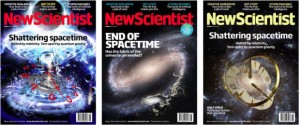Dietram Scheufele recently wrote a paper (Modern Citizenship or Policy Dead End? Evaluating the need for public participation in science policy making, and why public meetings may not be the answer) where he questions some common assumptions about public consultations, discussions, etc. about science and policy decisions.
From Dietram’s Feb. 5, 2011 posting,
Public meetings, technology panels, consensus conferences and other similar modes of citizen engagement are increasingly fashionable tools for policy making and engaging the electorate on emerging technologies. In the area of nanotechnology, a 2000 UK House of Lords report recommended making the direct dialogue with the public a mandatory and integral part of policy processes. And the 2003 U.S. Nanotechnology Research and Development Act mandated “convening of regular and ongoing public discussions, through mechanisms such as citizens’ panels, consensus conferences, and educational events” (21st Century Nanotechnology Research and Development Act 2003, STAT. 1924).
And without a doubt, consensus conferences and public meetings can serve as important input mechanisms upstream in the policy making process. They seem to be much more popular, however, among the academics and policymakers who propose them than they are among the intended audience, i.e., the general public.
I do appreciate that last line and encourage you to read the rest of the post and, if you have time, read the paper (40 pp in total with 10 pp of references and appendices) titled.
To be honest, I like the idea of public discussions, consultations, cafés, etc. but I’ve never really examined the notion in a social science kind of way. Intuitively, I’ve always considered a discussion as a good way to develop one’s thinking on a topic. That’s fair enough as far as that goes but it becomes problematic when you’re using those discussions, etc. as a means of arriving at public policy decisions. Here’s an excerpt from the paper’s abstract outlining how they’ve approached the issue and what they propose for the future,
In a first step, it briefly outlines the policy history of consensus conferences and other forms of public meetings. In a second step, it outlines claims made by proponents about the potential of consensus conferences and related efforts to create a two‐way dialogue among lay publics, experts and policy makers, to discover and debate relevant ethical, legal and social (ELSI) concerns early on, and ultimately to engage in better long‐term planning about emerging scientific fields and their societal applications. In a third step, the paper provides a comprehensive empirical review of how consensus conferences and related efforts have lived up to the normative hopes of their proponents, or – in most cases – have fallen short or even produced results that are counterproductive to the notion of a productive public debate. The paper closes with an argument against small‐group deliberative experiments with very limited reach and in favor of creating a long‐term infrastructure for a balanced public debate in mediated and interpersonal channels. [p.2]
From what I can understand, the problem the researchers have identified is that the people most likely to attend a public meeting are the ones who are already familiar with the topic and/or have strong opinions about it. Regardless of the topic, this population of public meeting/consultation attendees is already small and with regard to an emerging technology, that population becomes smaller still.
Scheufele proposes a form of public engagement that requires coordination across a wide range of stakeholders. He uses as an example a project of the US National Academy of Engineering,
A good example of a successful effort is the National Academy of Engineering’s committee on Developing Effective Messages for improving Public Understanding of Engineering (Committee on Public Understanding of Engineering Messages 2008). Funded by the National Science Foundation, it used a research‐based approach to identify existing communication disconnects with minority and female students who are disproportionately less likely to pursue engineering careers. The National Academy of Engineering developed and implemented a set of messages that had tested particularly well and coordinated the roll‐out of their communication campaign in partnership with stakeholders in industry, academia and the non‐profit world.
Such partnerships will be increasingly important for governmental agencies as they take a leadership position in bringing together lay publics, science and policy in the debates that will take place about NBIC technologies and their social impacts. These debates will have to involve all societal stakeholders, their values and concerns, and – most importantly – reasonably exhaustive scientific information about risks and benefits. They will also have to involve forms of engagement that address some of the extrinsic and intrinsic challenges outlined in this paper, and will therefore have to be substantially different from public meetings or consensus conferences. These new forms of engagement may involve innovative uses of online modes of communication to close widening knowledge gaps. Most importantly, they will require a significant future investment into what I would call the social science of emerging technologies, i.e., an understanding of how political and scientific discourse get created, emerge and potentially constrain policy debates and solutions.
In theory I appreciate Scheufele’s suggestion but I find the example seems to exemplify Edward Bernay’s (see Wikipedia essay on ‘father’ of public relations) approach to public relations. His best known book was titled, Propaganda (from the Wikipedia essay),
In Propaganda (1928), Bernays argued that the manipulation of public opinion was a necessary part of democracy: Continue reading
